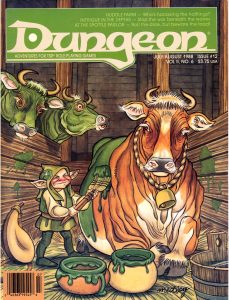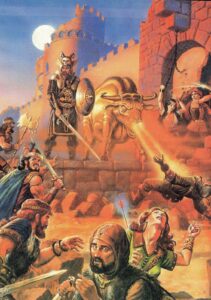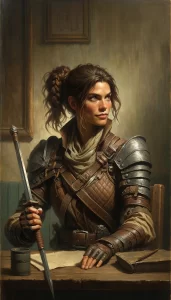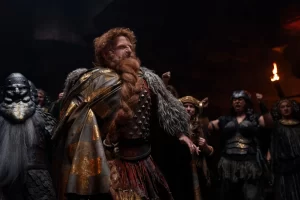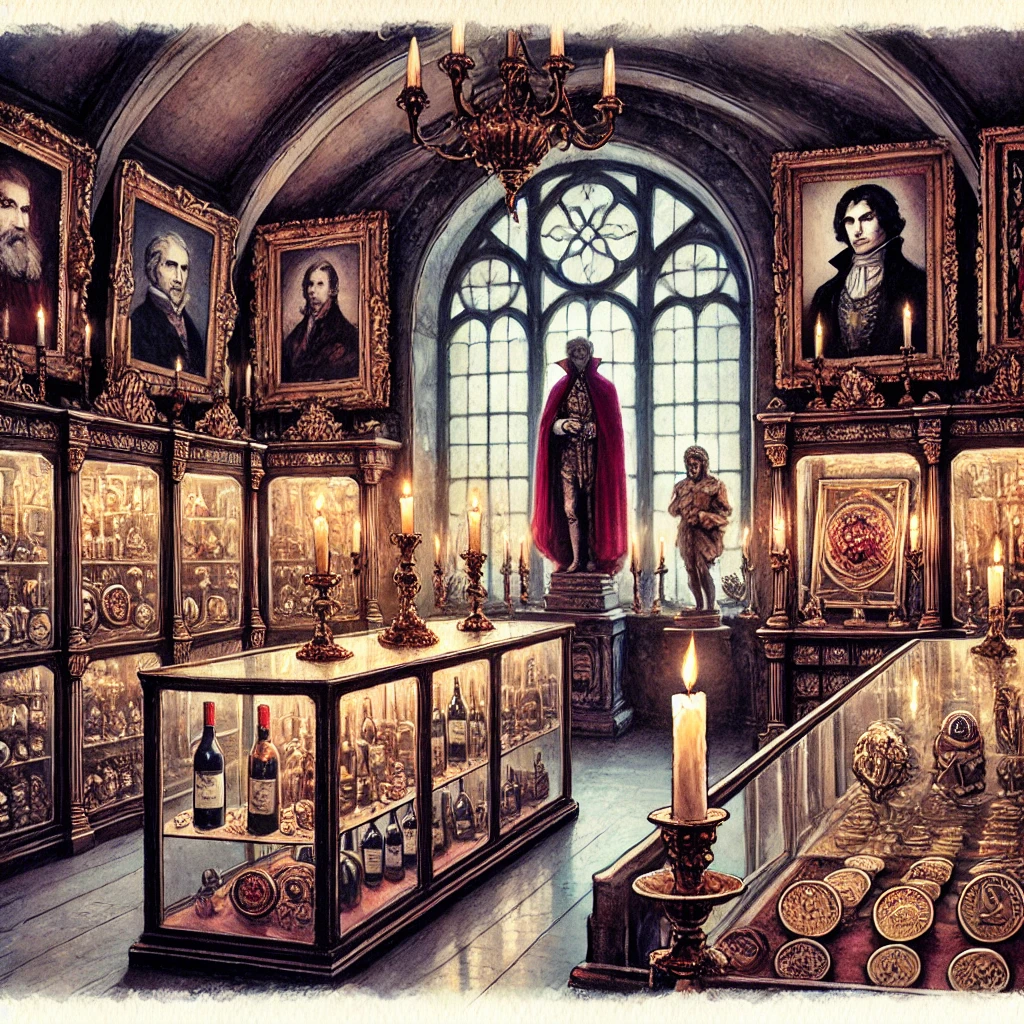
In the depths of ancient keeps and forgotten crypts, vampire trophy rooms serve as testament to centuries of adventure, conquest, and dark bargains. These aren't mere museums -- they're arsenals of magical might, repositories of cursed artifacts, and galleries of power that would make even the most ambitious liches envious. For while dragons might hoard gold and gems, vampires collect items of power, significance, and magical resonance that span the breadth of your fantasy campaign world.
The very nature of immortality gives vampires a unique advantage in collecting magical artifacts. A vampire who claimed a seemingly minor magical trinket from a fallen adventurer in ages past might now possess a legendary item of power, its true nature revealed only through centuries of magical saturation. That simple ring from a defeated paladin might have grown in holy power over generations of divine service, while an unremarkable spellbook could have slowly absorbed magical energies until it became a unique repository of forgotten magic.
Consider the peculiar magical properties that vampire trophy rooms develop over time. Centuries of housing powerful artifacts create unique magical environments -- areas where ley lines twist into new configurations, where the barrier between planes grows thin, or where magical energies pool like invisible mists. Some vampire collectors deliberately arrange their treasures to create magical resonances, turning their trophy rooms into enormous magical devices. A clever vampire might position mirrors blessed by different faiths to create a ward against divine magic, or arrange crystalline sculptures to focus magical energy into a personalized form of mythal.
The collections themselves often reflect the unique aspects of fantasy worlds. A vampire's gallery might include preserved body parts of legendary monsters -- the fang of an ancient dragon, the eye of a beholder, the heart of a medusa still beating after centuries. Another might collect tools of faith and magic -- holy symbols corrupted through dark rituals, staffs that channel both divine and arcane energy, or ritual implements from forgotten cults. These items, beyond their immediate power, often serve as components for grand magical workings or as keys to unlocking greater sources of power.
The architecture of vampire trophy rooms incorporates both mundane and magical security. Glyphs of warding mesh with mechanical traps, while animated guardians patrol alongside enslaved spirits. Many vampire collectors employ complex magical systems of rotating pocket dimensions, allowing them to instantly shift their most valuable treasures into extraplanar spaces. Others maintain their collections within time-locked chambers, where days or even years might pass inside while only hours tick by in the outside world. The most paranoid collectors might even keep their treasures in reversed sanctuaries -- unhallowed spaces that are actually warded against undead, ensuring that even other vampires cannot easily access their hoards.
Trophy rooms often serve as repositories of magical knowledge and power. A vampire's collection of spellbooks might include tomes seized from conquered wizard towers, grimoires borrowed from fiendish allies, and scrolls pieced together from fragments found in ancient ruins. These magical libraries frequently focus on specific schools of magic or particular types of spells -- a vampire known for mental domination might collect works on enchantment and illusion, while one obsessed with warfare might gather books of evocation and abjuration.
The most prized possessions in many vampire collections are items of legend and prophecy. Ancient weapons waiting for prophesied wielders, crowns that grant legitimacy to royal bloodlines, or artifacts mentioned in world-shaking prophecies all find their way into vampire vaults. Some vampires actively seek out items of destiny, believing that controlling such artifacts allows them to manipulate fate itself. Others collect prophetic items simply to prevent the fulfillment of prophecies that might threaten their eternal existence.
Living collections take on new meaning in a fantasy setting. Some vampires maintain menageries of magical beasts, from common creatures like hyppogriffs and displacer beasts to unique specimens of nearly extinct magical species. Others keep collections of enchanted plants, growing gardens of razor vine and assassination flowers alongside more benign but equally magical flora. The most notorious collectors maintain collections of intelligent magical creatures -- imprisoned fey, bound elementals, or even young dragons kept in magical stasis.
Weapon collections in vampire trophy rooms often focus on items of legendary status or magical significance. Ancient vorpal blades rest alongside stakes carved from the first trees of the world, while holy avenger swords captured from fallen paladins share space with staves that once belonged to legendary archmages. Many vampires maintain collections of weapons specifically enchanted for warfare against other supernatural creatures -- blades that can cut through a lycanthrope's regeneration, arrows that can track a vampire through magical disguise, or shields that can reflect a medusa's gaze.
The preservation of magical artifacts presents unique challenges. Vampires must protect their treasures not just from physical deterioration but from magical decay, planar interference, and divine intervention. Many collections include complex magical wards layered over centuries, often incorporating protections against specific schools of magic or particular types of creatures. Others might employ more exotic methods of preservation -- temporal stasis fields, elemental binding, or even agreements with powerful outsiders for protection.
For gaming purposes, vampire trophy rooms serve multiple roles. They can be ultimate objectives for high-level parties, with powerful artifacts waiting to be claimed. They might serve as neutral ground for supernatural politics, where vampires and other powerful beings can meet to negotiate while surrounded by enough magical firepower to destroy small nations. For DMs, they provide perfect settings for introducing new magical items, revealing forgotten lore, or establishing connections between different parts of their campaign world.
What makes vampire trophy rooms particularly interesting in fantasy settings is their role in the greater magical ecosystem. These collections often serve as focal points for magical energy, their concentrated power attracting everything from minor magical phenomena to major planar events. A vampire's trophy room might inadvertently create zones of wild magic in the surrounding area, spawn spontaneous magical effects, or even influence the dreams of nearby spellcasters. Some scholars suggest that particularly large collections might actually influence the flow of magic through the world, creating new ley lines or altering the very fabric of reality in their vicinity.
The study of vampire collections has become its own school of magical research. Mortal wizards attempt to understand how centuries of proximity to undead collectors affects magical items, while clerics study how holy artifacts change under long-term exposure to negative energy. Some researchers suggest that every vampire's collection develops its own unique magical signature, a kind of supernatural fingerprint that reflects both the nature of the collector and the items they've gathered. Others maintain that by studying multiple vampire collections, one might understand deeper truths about the nature of magic itself.
For adventuring parties, vampire trophy rooms represent both incredible opportunity and extreme danger. Beyond the obvious lure of powerful magic items, these collections often contain crucial information about world-threatening events, keys to ancient mysteries, or tools needed to complete vital quests. However, the magical security systems protecting these collections often include effects specifically designed to counter common adventuring strategies -- areas of antimagic, zones of truth that reveal invisibility, or fields that prevent dimensional travel. The most sophisticated collections might even include progressive security measures that activate based on the abilities demonstrated by would-be thieves.
Perhaps most intriguingly, vampire trophy rooms often serve as repositories of campaign plot hooks and adventure seeds. Each item in a vampire's collection has its own story -- who originally owned it, how it was acquired, what powers it might possess, and who might want to reclaim it. A single trophy room could spawn dozens of adventures, from simple retrieval missions to complex political intrigues involving multiple factions. Smart DMs can use vampire collections as ways to introduce new campaign elements, provide crucial clues about ongoing plots, or create connections between seemingly unrelated adventures.
In many ways, a vampire's trophy room serves as a physical representation of their power and influence within your fantasy world. Each item tells a story not just of what it is, but of how it came to rest in that particular collection. For vampire hunters and adventurers, these collections represent both incredible danger and irresistible opportunity -- for within these carefully curated rooms lie not just valuable treasures, but the potential keys to understanding and defeating their immortal curators. The most dangerous items in any vampire's collection, however, might be the ones they want hunters to find -- carefully crafted false leads and cursed artifacts designed to lead their enemies astray.


